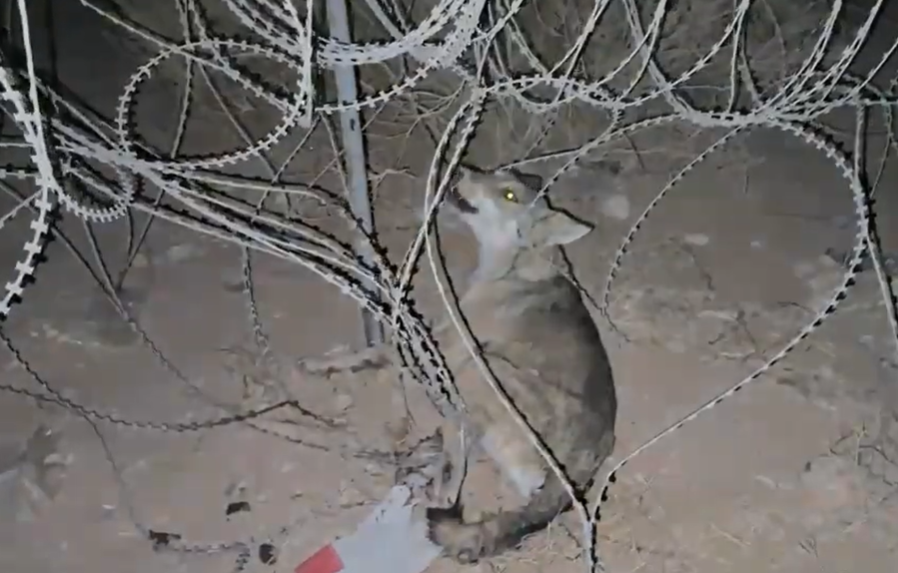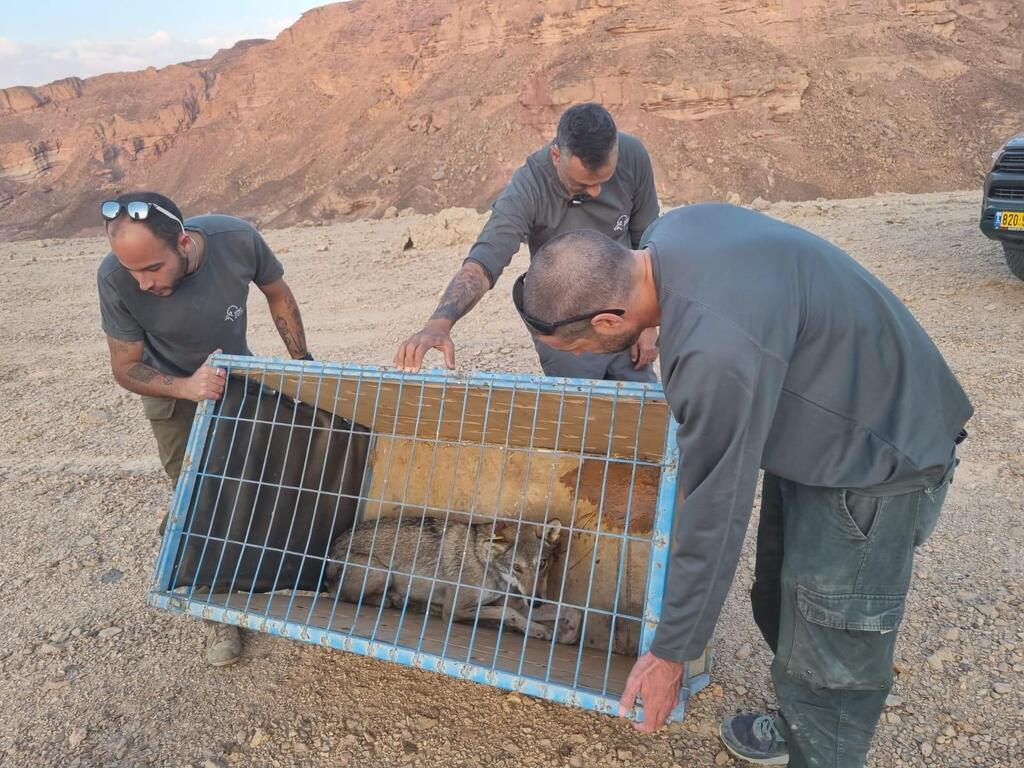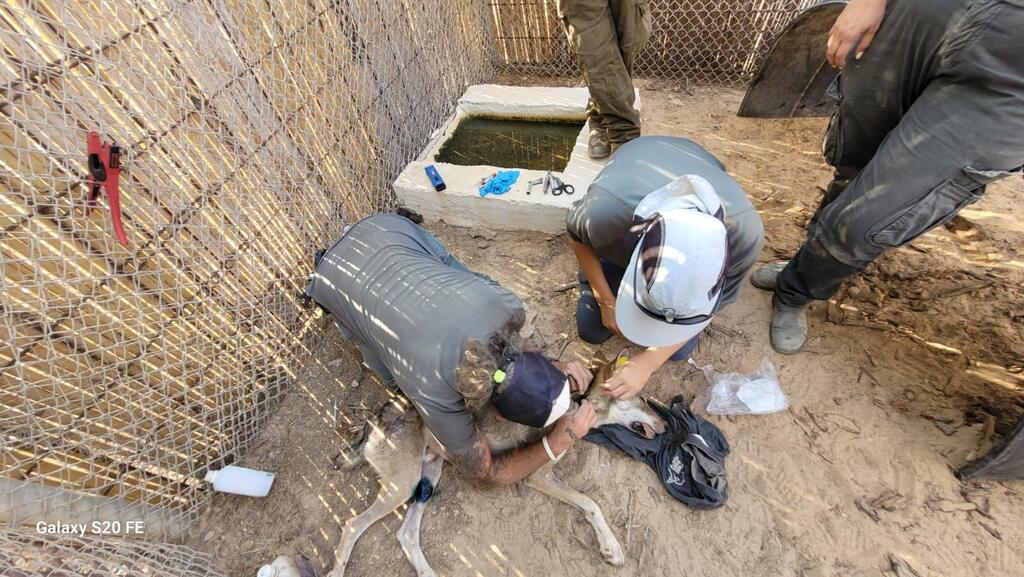Getting your Trinity Audio player ready...
Children from Kibbutz Elifaz in the southern Arava Desert saved the life of an injured Arabian Wolf, which was trapped in a barbed wire fence. The children located the animal after they followed their ball to where it was trapped. After a few weeks of rehabilitation, the wolf was returned to the wild.
Children save Arabian Wolf
(Video: Nature and Parks Authority)
The wild animal was in a serious condition. "The children were playing soccer on a field not far from the fence. When one of the children ran towards the fence to retrieve the ball, he heard movements. He called everyone and the children came with flashlights and saw the wolf," Roni Sussman, mother of 10-year-old Ayala, said.
The kids alerted their parents and nature authorities who summoned veterinarians to sedate the wolf before treating it. "His leg was injured and tangled in the wire fence. "It happened late at night but the children waited there and did not move until the inspectors took the wolf for treatment," the proud mother said.
For the last month and a half, the wolf has been rehabilitated at the Nature and Parks Authority's Yotvata Hai-Bar Nature Reserve. The wolf was treated in Eilat.
Before its release back to the wild, the inspectors invited the children who saved the animal to share in the experience. "The children arrived at 3:00 a.m. and refused to move," a nature guard said. "When it was released, the wolf had winter fur and looked impressive. The wolf ran and ran and it happened in a flash. The children wanted to see it happen and were happy."
Dr. Nitzan Segev, an ecologist for the Arava region at the Nature and Parks Authority, follows the wolf using the transmitter, and its track can already be seen around Elifaz. "Following it will provide us with information about its food, water, and shelter sources and those of others in the vicinity," she said.
The Nature Authority added that the Arabian Wolf is a protected species that lives in packs. Today, it is the largest carnivore in Israel and is crucial to the ecological balance in the Arava. The wolves' potential prey in the desert are rabbits, the Nubian ibex, the Dorcas gazelle, and the Arabian oryx.
Get the Ynetnews app on your smartphone:








